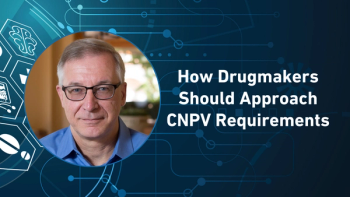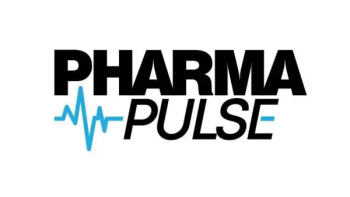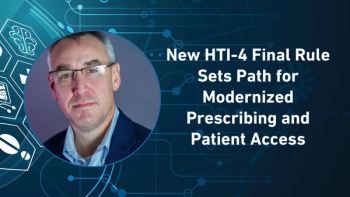The buzz around GLP-1 agonists like Ozempic and Wegovy is undeniable, fueled by social media virality and impressive clinical results. This has driven a staggering surge in prescriptions, with some reports indicating growth of over 5,000% since 2018 in the United States.1
In response to this immense demand, coupled with high costs and accessibility issues, compounded alternatives have emerged as a seemingly pragmatic solution. However, these compounded GLP-1s are creating a significant, often underestimated, legal, reputational, and financial minefield for startups and the broader life sciences industry. I'll explain why this "gold rush" is fraught with peril, from a risk management and insurance perspective.
The allure of compounded alternatives: A closer look at the "gold rush"
The intense demand for GLP-1 agonists stems from their proven efficacy in managing type 2 diabetes and, increasingly, in facilitating significant weight loss. However, patients often face substantial hurdles in accessing brand-name versions due to their high cost and persistent supply shortages.
This gap in the market has created a "gold rush" for compounding pharmacies and new startups. These entities have stepped in, offering seemingly cheaper2 and more readily available compounded alternatives to fill the void. Compounding, by definition, involves customizing medications to meet individual patient needs, such as altering dosage forms or removing allergens.
However, in the context of GLP-1s, this often means creating versions of FDA-approved drugs when those drugs are either unavailable or prohibitively expensive, raising critical questions about their regulatory oversight, safety, and effectiveness.
The elephant in the room: The critical absence of FDA approval
The fundamental issue with compounded GLP-1s lies in their sidestepping of the rigorous FDA approval process. To attain FDA clearance, a pharmaceutical product must undergo an exhaustive developmental and review journey. This encompasses extensive clinical trials designed to substantiate both safety and efficacy, alongside strict adherence to elevated manufacturing standards and comprehensive quality control protocols. This lengthy and capital-intensive process is precisely what assures the reliability and integrity of approved medications.
So, why aren't compounded GLP-1s approved? Simply put, they bypass this standard FDA pathway. They aren't tested as a complete product by the FDA for their safety or how well they work. This isn't just a minor detail; it has some pretty significant consequences. There's a severe lack of oversight, meaning no federal guarantee on the purity, potency, or consistency of ingredients. Plus, their efficacy is unverified—there are no clinical trials backing the effectiveness of these specific compounded formulations.
This all leads to an increased risk of adverse events, like contamination, incorrect dosages, or unexpected side effects, simply because production can vary wildly. And let's not forget the legal gray areas these operations inhabit, as current regulations aren't set up for the mass production and widespread distribution of these types of compounded drugs.
Key Takeaways
- Compounded GLP-1 alternatives lack FDA approval, leaving patients and companies exposed to risks like contamination, dosage errors, and unverified efficacy.
- Legal and financial liabilities are high, with potential lawsuits for product defects, false advertising, and regulatory enforcement actions, while insurers are increasingly limiting or excluding coverage.
- Reputational and operational risks are significant, as safety incidents can quickly damage brand trust and investor confidence, highlighting the need for transparency, quality control, and robust risk management.
Navigating the legal and reputational minefield for startups
Navigating the burgeoning market for compounded GLP-1 alternatives presents a complex and perilous landscape for startups, laden with significant legal and reputational risks.4
Legal exposure
The most substantial legal threat stems from product liability claims. Should a patient experience harm attributed to a compounded GLP-1 product, the startup faces direct liability.The critical absence of FDA approval for these specific formulations considerably simplifies the plaintiff's burden in demonstrating negligence or a product defect.
Furthermore, any marketing assertions that compounded versions are "identical" or "equivalent" to FDA-approved drugs open the door to false advertising and misrepresentation lawsuits, alleging deceptive practices.
Companies operating in this space are also subject to intensified regulatory enforcement actions from bodies such as the FDA and state pharmacy boards, potentially leading to cease-and-desist orders, substantial financial penalties, injunctions, and in severe cases, criminal investigations.
Moreover, original manufacturers are increasingly pursuing unfair competition lawsuits, citing patent infringement or other unfair business practices against entities offering compounded alternatives.
Reputational damage
Beyond legal repercussions, the potential for reputational damage is immense. Any patient safety incident, particularly if it garners widespread media attention, can irrevocably tarnish a company's brand overnight.
Operating outside established regulatory frameworks inherently erodes public trust and consumer confidence. A compromised reputation can also severely impact a startup's ability to attract crucial investment and talent, hindering growth and innovation. Ultimately, negative press surrounding compounded GLP-1s can cast an unfavorable shadow across the entire life sciences sector, inadvertently affecting even legitimate businesses.
The insurance industry's shifting landscape: What non-approval means for coverage
The insurance industry is significantly recalibrating its approach to non-FDA approved compounded GLP-1s. Insurers, acutely aware of regulatory and liability risks, are increasingly hesitant or outright refusing to underwrite policies for companies in this sector.
Existing policies often feature explicit exclusions for non-FDA approved products or harm from off-label use. For the few willing to offer coverage,5 premiums are substantially elevated with higher deductibles.
Additionally, underwriting demands are now far more stringent, requiring exhaustive due diligence on manufacturing, quality control, and patient consent. Even with a policy in place, claims related to compounded GLP-1s are highly susceptible to disputes, as insurers may contend non-compliance with policy terms or regulatory standards, potentially leaving companies exposed.
Mitigating risks: essential advice for companies in the GLP-1 ecosystem
Mitigating the inherent risks within the GLP-1 ecosystem requires proactive and stringent measures from all stakeholders.
For companies involved in compounding/distribution
For those operating directly in the compounding and distribution of GLP-1 alternatives, a heightened level of vigilance and operational excellence is non-negotiable, including:
- Extreme due diligence on partners is paramount; thoroughly vet compounding pharmacies to ensure adherence to the highest quality and safety standards, exceeding minimum requirements.
- Maintain unwavering transparency with patients, unequivocally communicating the non-FDA approved status of compounded medications and all associated risks, securing explicit informed consent.
- Implement and meticulously document robust quality control and assurance processes internally.
- Engage expert legal and regulatory counsel specialized in pharmaceutical regulation and product liability to navigate this complex landscape effectively.
- Collaborate with a specialized insurance brokerage possessing deep expertise in the life sciences sector and access to specialty carriers willing to underwrite these unique risks.
For the broader life sciences industry
The broader life sciences industry must monitor the regulatory environment closely, staying abreast of evolving FDA guidance and state-level regulations pertaining to compounding. It is crucial to protect brand integrity by being acutely aware of the potential for reputational contagion stemming from incidents involving compounded alternatives. Ultimately, advocate for clarity in regulatory frameworks to safeguard patient safety and ensure fair competition across the market.
Conclusion: Prioritizing prudence in the GLP-1 era
While the GLP-1 "gold rush" offers undeniable opportunities, the inherent risks associated with compounded alternatives are substantial and cannot be overlooked. FDA approval is not merely a bureaucratic hurdle; it is a critical safeguard for patient safety and a company's long-term viability. Companies operating in or around the GLP-1 market, particularly those considering compounded alternatives, must prioritize robust risk management, seek expert guidance, and fully comprehend their liability exposure. Prudence, rather than solely profit, must guide their strategic decisions.
About the Author
Justin Kozak is the Life Sciences Practice Lead and Executive VP at Founder Shield.
References
1. Ozempic’s Rise in Popularity & Weight-Loss Alternatives. Health Prem. https://www.healthprem.com/articles/ozempic-and-weight-loss-alternatives#:~:text=Since%20going%20viral%20on%20social,sought%20after%20in%20the%20UK.
2. Saraceno N. How Recent Executive Orders Impact the Drug Pricing Landscape. Pharmaceutical Commerce. May 30, 2025. https://www.pharmaceuticalcommerce.com/view/how-recent-executive-orders-impact-drug-pricing-landscape
3. Development & Approval Process | Drugs. US Food & Drug Administration. https://www.fda.gov/drugs/development-approval-process-drugs
4. Kozak J. Navigating Evolving Risks in the Biotech Industry. Founder Shield. September 20, 2024. https://foundershield.com/blog/biotech-industry-risks/
5. Bailey D. Insurance Companies Scrambling to Support Need for GLP-1 Drugs. InsuranceNewsNet. May 21, 2025. https://insurancenewsnet.com/innarticle/insurance-companies-scrambling-to-support-need-for-glp-1-drugs






